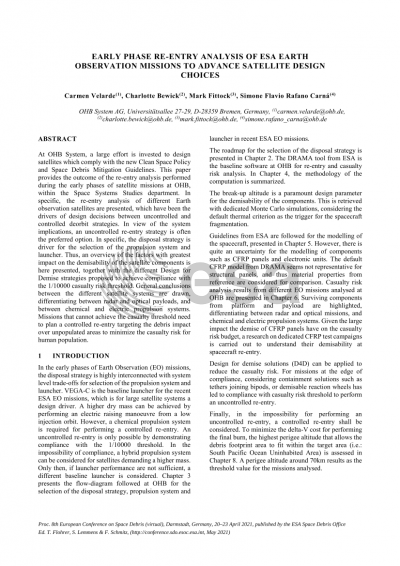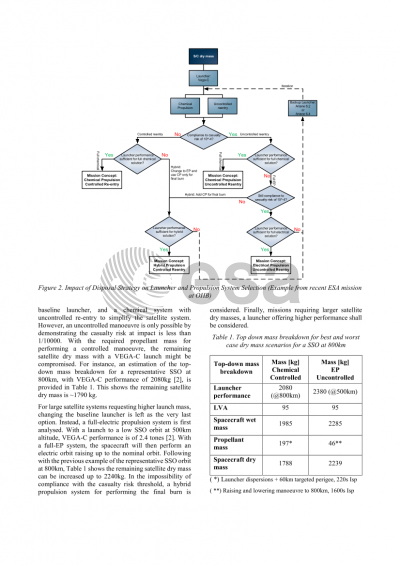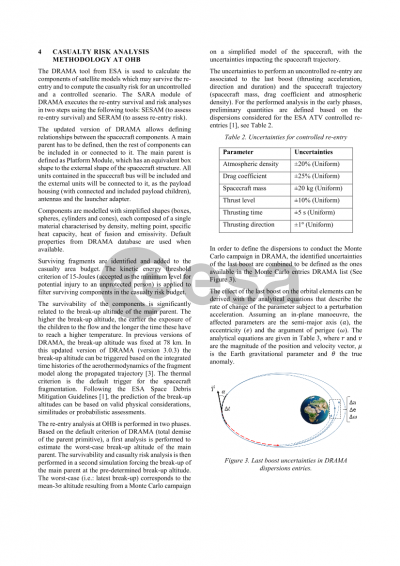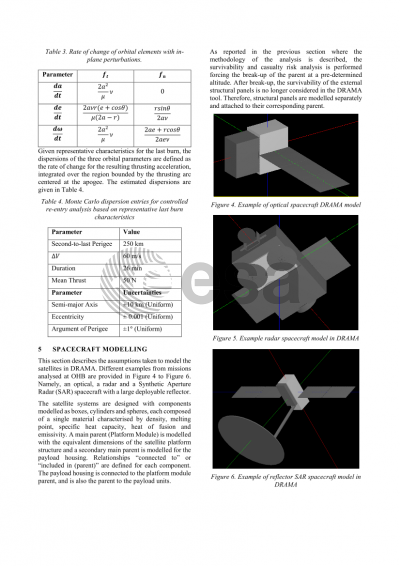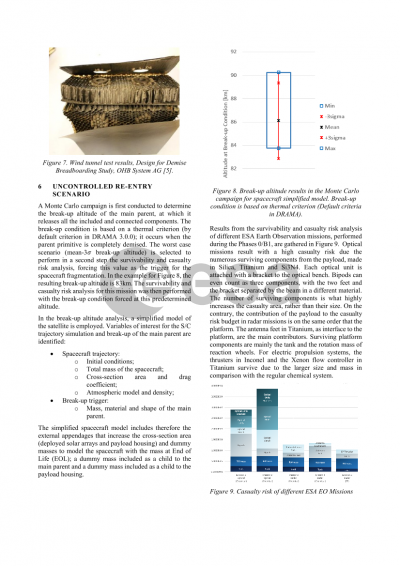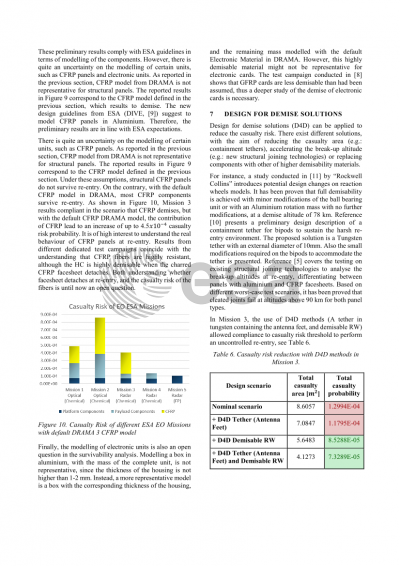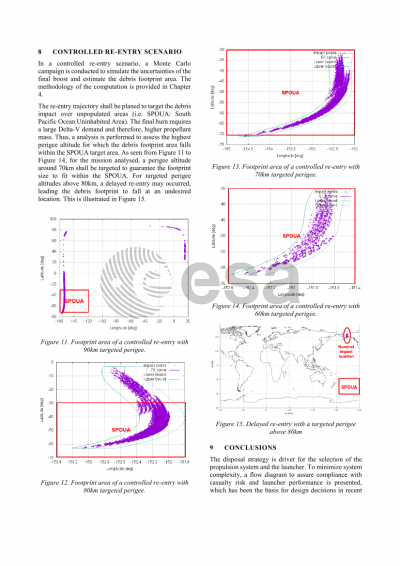Document details

Abstract
At OHB System, a large effort is invested to design satellites which comply with the new Clean Space Policy and Space Debris Mitigation Guidelines. This paper provides the outcome of the re-entry analysis performed on the running projects at OHB, within the Space Systems Studies department. In specific, the reentry analysis of different Earth observation satellites are presented, which have been the drivers of design decisions between uncontrolled and controlled deorbit strategies. In view of the system implications, an uncontrolled re-entry strategy is often the preferred option. Thus, an overview of the factors with greatest impact on the demisability of the satellite components is here presented, together with the different Design for Demise strategies proposed in our missions and which have been tested at OHB.
Design decisions regarding controlled versus uncontrolled deorbit strategies lie on casualty risk analysis to demonstrate compliance with the 1/10000 threshold. DRAMA 3.0.0 is used to perform the re-entry analysis. The casualty risk budget is built with the surviving components, filtering those with a kinetic energy at impact below15J. A thermal criterion is the trigger for the components demisability. The survivability of the components is hence significantly related to the break-up altitude. The higher the break-up altitude, the earlier the exposure of the children to the flow (i.e.: In the re-entry satellite model, a main parent contains the different component named children.). An estimation of the break altitude of an Earth Observation satellite is presented in Fig. 1.
Mainly large and high melting temperature components survive re-entry (Fig. 2). In specific, the CFRP model from DRAMA seems to be not representative for regular structural panels. To relax these conservative constraints, an empirical scenario based on the OHB D4D Breadboarding testing campaign is analysed. A higher break-up altitude is considered based on testing of structural joints and, sustained by observations, a CFRP model is built with “melting temperature” defined as the threshold value at which fibres are released from the resin. Even if they survive re-entry, the kinetic energy at impact of the separated fibres will be sufficiently low to cause any injuries.
In missions where the resulting casualty probability is higher than the acceptable 1/10000 threshold, design for demise solutions (D4D) are proposed, with the aim of reducing casualty area (e.g.: containment tethers), accelerating the break-up altitude (e.g.: new structural joining technologies) or components with high demisability materials. Missions that cannot achieve the casualty threshold, even after a further analysis with object oriented tools, need to plan a controlled re-entry targeting the debris impact over unpopulated areas to minimize the casualty risk for human population.
Preview
